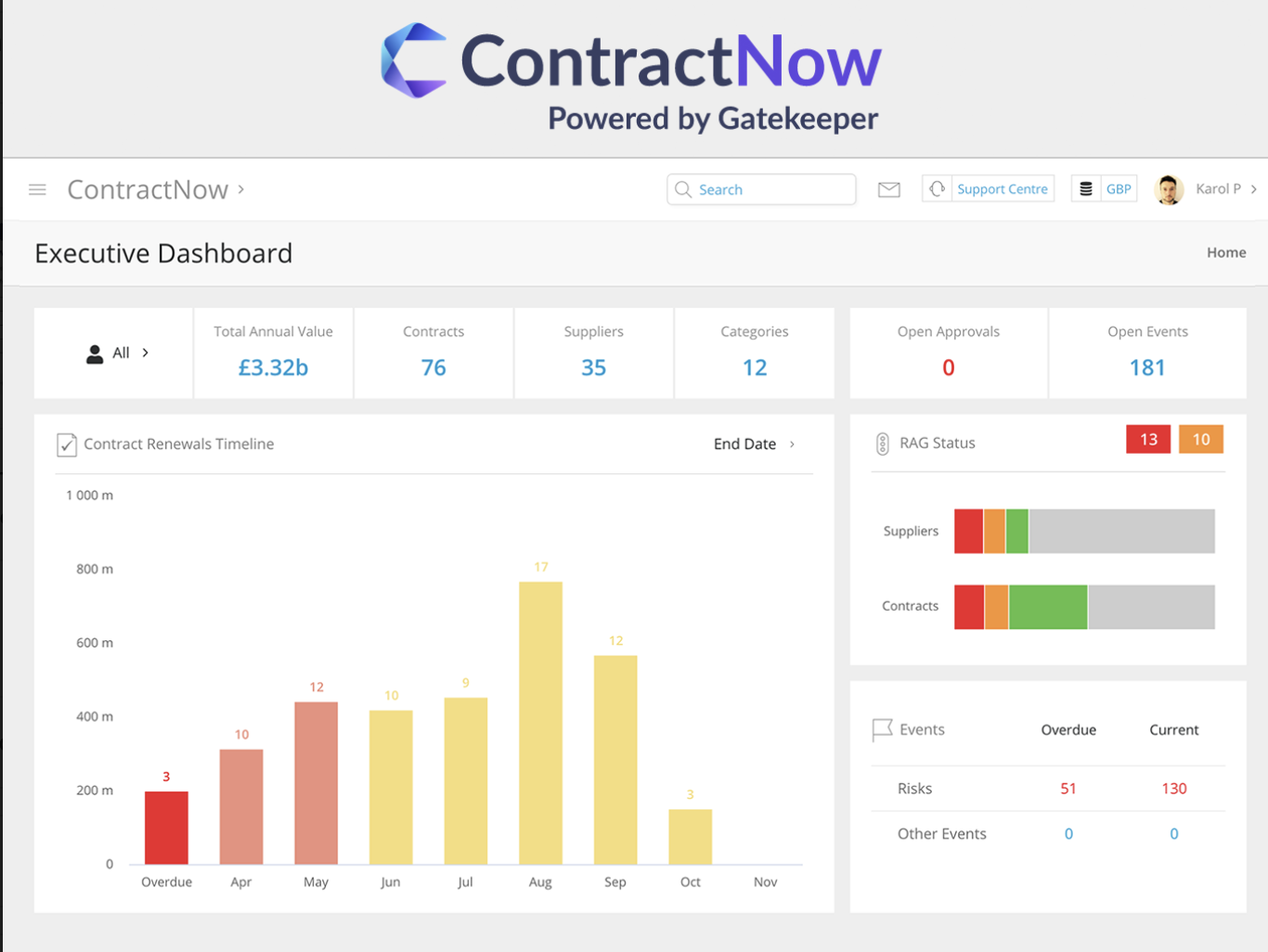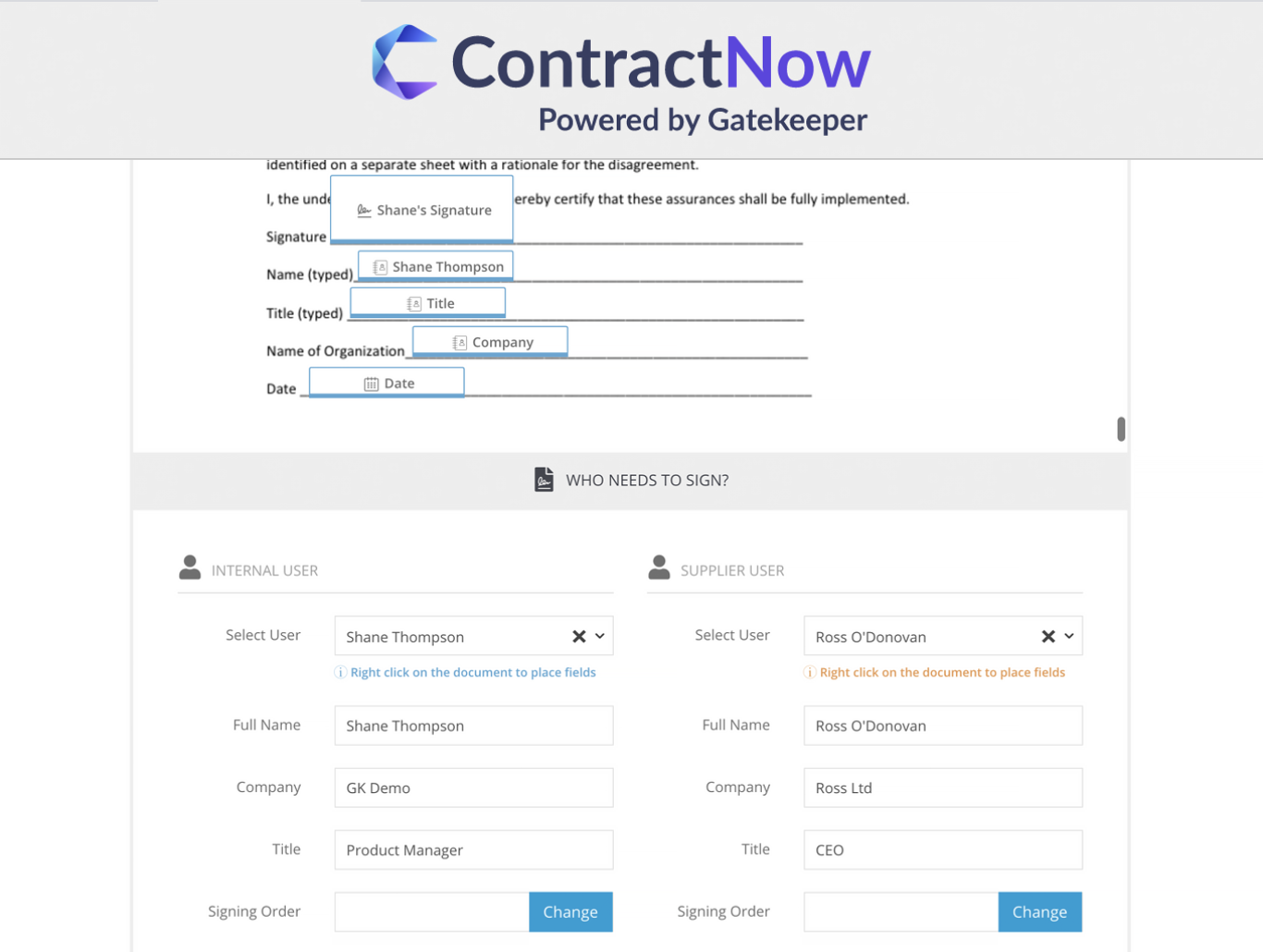At Gatekeeper, the term “Legacy contracts” refers to all agreements that your business is managing prior to first working with our solution.
It’s likely that these contracts were initiated at a time when your contract management processes were – and may still be – manual. Typically they will be stored in shared drives, email accounts or even in hard copy.
As a result, legacy contracts can easily be forgotten about and expose the business to a variety of risks including non-compliance, auto-renewals, excess spend and failure to deliver on obligations. The longer these contracts remain buried, the greater the risk your business could face.
So how can you better manage your legacy contracts? In this article, we explore why your business needs to migrate its contracts and documents, how contract management software can support your efforts and the benefits of legacy contract migration.
How businesses traditionally manage legacy contracts
Businesses often use processes and methods that are simple, accessible and easily used across the entire organisation to store and manage legacy contracts.
These can include Excel spreadsheets, shared drives and filing cabinets - leading to a broad range of formats being used, from paper through to PDFs or Word documents buried in an inbox.
These simple mechanisms often provide an illusion of order and control but when legacy contracts are stored and managed in a fragmented way, the following issues become apparent when it’s time to retrieve the contract or specific information:
- Poor visibility of the entire contract portfolio
- Unorganised contract records and related documentation
- Duplicated contract records containing inconsistent information
- Legal teams spending too much time searching for and locating key information
Legacy issues are magnified in growing businesses, businesses that handle large volumes of contracts and those who are going through mergers and acquisitions.
Without a single source of truth about your business’s portfolio, you will inhibit your ability to make informed business decisions and to optimise the value being delivered from historic agreements."
Why you should migrate legacy contracts into a centralised repository
If your legacy contracts are stored in silos and the view of your business’s agreements is fragmented, the first step you should take is to migrate your documents to a centralised, digital contract repository. This repository might look different based on the maturity of your business.
It could be a single Excel document with a designated gatekeeper (which causes additional risks that you can read about here) or a dedicated contract repository that is offered by contract management software providers like ContractNow.
Searching, locating and organising your legacy contracts and data ahead of migrating them into a centralised repository will inevitably require time, resource and collaboration between all departments in your business. However, it is an important strategic step that your business should take if it wants to regain control of its contracts and minimise risk.
Below, we take a look at three key reasons you should migrate your legacy contracts into a central repository.
1. Build a single source of truth for your contract portfolio
Due to the fragmented nature with which legacy contracts are often treated, it can often be difficult to know exactly what contract you’re dealing with when you eventually locate it. When contracts have been managed in a manual way, it is easy to:
- Create duplicate versions containing different terms with no audit trail of amends
- Misplace important documents such as compliance and security certificates
- Create bottlenecks where only a small number of people understand the contents of contracts
- Adopt different storage and management processes for each contract
Spending time migrating your legacy contracts to a centralised repository has multiple benefits: contracts are easier to find, associated documents can be stored against the master record and everyone can access the information they need.
Most importantly, it prevents fragmentation and gives you a single source of truth for your entire contract portfolio."
Centralising your legacy contracts will improve your overall visibility, reduce the time spent looking for them and you’ll be able to easily store and access important compliance certificates from a single location.

2. Understand the real value of legacy contracts
It’s easy to forget about contracts that are buried deep in inboxes or locked away in filing cabinets as long as the agreements are running smoothly, but it’s also easy for those contracts to cause revenue leaks across your business.
Migrating your legacy contract metadata into a dedicated repository will give you brand new insight into even your oldest agreements. The information contained within your business’s legacy contracts is just as important as the contracts themselves. Metadata that you should migrate and capture within your includes:
- Contract type and value
- Contract notice period and expiry dates
- Notice periods
If your data has been fragmented up until this point, it’s likely that any financial information may be difficult to locate in the first instance.
Collaboration with the Finance team is critical to understand how many payments are going out, when, and how much those payments are. The Finance team may also be able to point you towards any essential paperwork that needs to be included in your migration efforts.
By migrating your legacy contracts and metadata, you’ll be able to see all of your contract agreements and the costs associated with them – helping you to take a consistent approach to procurement and an accurate approach to any consolidation activities.
3. Easily identify contract and business risk
The time taken to find and search through legacy contracts can often deter team members from this activity – especially when they have their own job, targets and issues to focus on. However, spending time reviewing and managing legacy contracts is crucial to the overall health of your business.
Your business needs to be able to see its agreements at a glance, especially:
- Expiry dates for compliance certificates
- Contractual dates by which obligations should be fulfilled
- How the contract is performing against expectations
If you aren’t able to easily identify business and contract risk, your business exposes itself to risk of fines, disputes and even operational failure.
Migrating your legacy contracts into a centralised repository will put you in the best position to identify and minimise risk whether that’s financial, reputational or overall compliance."
A centralised view of your contracts not only provides you with an accurate view of the state of your business agreements, but it also informs your risk mitigation and management strategies - strengthening your business and protecting its overall health and reputation.
How ContractNow supports and simplifies legacy data migration
Legacy contract migration requires time and resources. It relies on collaboration between all departments across your business. For some businesses, this requirement serves as a deterrent from completing the information-gathering process for a number of reasons:
- Teams are already overstretched with contract administration and can’t spare time
- There isn’t enough resource to dedicate to the project especially in small teams
- A previous employee, likely the guardian of a spreadsheet, has left and taken knowledge with them
If you recognise any of the scenarios above, or if you’ve been putting legacy contract management on the backburner, it’s time to consider migrating your contracts to a dedicated solution.
ContractNow not only provides you with a centralised contract repository, but it also eases the burden associated with legacy contract migration through its powerful AI-Extract Engine."
Although you will still be required to gather all of your contracts and relevant documents ahead of migration, you can easily upload PDFs and scanned documents into our contract management software.
Key information from these documents will be automatically extracted – even from poor quality scans and complex tables. If your business still has a number of paper contracts, the handwritten text can also be digitised easily and accurately through the power of ContractNow’s technology.

By automating data entry for your legacy contracts and migrating them to a dedicated contract management solution, you benefit in a number of ways including:
- Elimination of manual errors that could otherwise lead to poor business decisions
- Reduced manual contract administration for specialist teams
- Improved compliance as a result of visible, up-to-date and accurately recorded contracts
Migrating your legacy contracts into a dedicated contract management solution allows you to digitise your historical records, take back control of your entire contract portfolio and successfully carry out procurement strategies, optimisation activities and contract reviews."
If you want to know more about how ContractNow supports legacy contract migration or if you’re ready to get started, contact us today.



